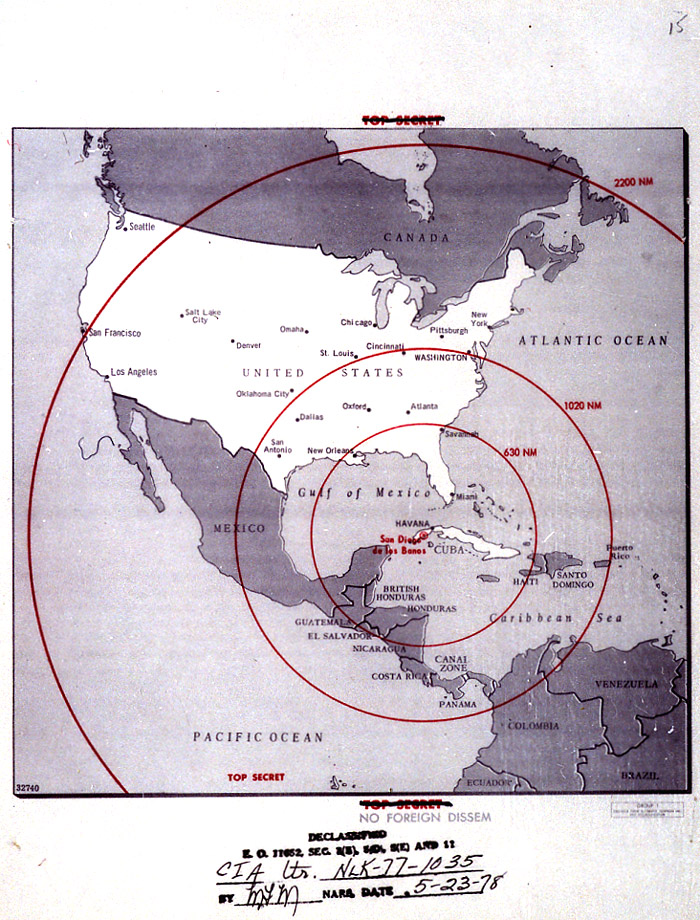Fifty years ago today, the Cuban Missile Crisis reached the White House. The JFK Library reports on how President Kennedy learned of the offensive missiles in Cuba:
At 8:45 AM on October 16, 1962, National Security Advisor McGeorge Bundy alerted President Kennedy that a major international crisis was at hand. Two days earlier a United States military surveillance aircraft had taken hundreds of aerial photographs of Cuba. CIA analysts, working around the clock, had deciphered in the pictures conclusive evidence that a Soviet missile base was under construction near San Cristobal, Cuba; just 90 miles from the coast of Florida. The most dangerous encounter in the Cold War rivalry between the United States and the Soviet Union had begun.The president had several other meetings on Cuba that day. Here is audio of one, from the National Security Archives:
On the morning of October 16, CIA imagery analysts brief the president on the results of U-2 photo reconnaissance overflights of Cuba on Sunday that had discovered the existence of Soviet medium-range ballistic missiles (MRBM) in Cuba. The briefing begins with an interpretation of the images by Arthur Lundahl from CIA's National Photographic Interpretation Center (NPIC), who speaks loud and clearly, with supporting analysis from the CIA's Acting Director Marshall Carter, whose voice is low and often difficult to hear. The president then asks Lundahl several questions about the images. Lundahl then introduces Sidney Graybeal ("our missile man") who shows the president photos of similar weapons systems taken during Soviet military parades. Obviously concerned, the president then asks Graybeal when the missiles will be ready to fire. Secretary of Defense Robert McNamara then joins the discussion, adding that he doubts that the missiles are yet ready to fire since there is no indication that nuclear warheads are present.
